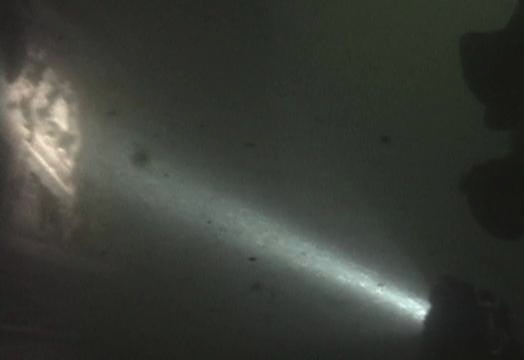
‘Once a thriving city that lasted for more than 1300 years, Lion City, so named because it stood in the shadow of Five Lion Mountain, is now submerged beneath the waters of Qingdao Lake. When the government commenced on the Xin’an River Dam project in 1959, Lion City was the casualty, as the area was in need of an artificial lake. For more 40 years the city remained mostly forgotten. Recently, however, the Chinese government has taken steps to preserve the remains for future generations via sonar mapping, videos and photography.
‘Lion City was once a large habitation, covering approximately 1.5 square miles of land. All the architectural wonders that were in the city before its inundation still remain, sitting around 90 feet below the surface of the lake. There are imperial tombs, palaces, temples, government and civil buildings and residences.
‘Many decorative elements still exist as well, including at least 18 memorial arches and dozens of statues. There is also an intact city wall with five gates in it. One of the things that makes Lion City so unique (aside from it being located underwater) is that almost all cities during China’s past used a system of four gates to represent the four cardinal directions. Lion City has one more than this commonly accepted number.
‘Though the government is not planning on draining the lake to get the city back into the open air, it has for the last 10 years been dedicated to preserving its memory. Unfortunately, only archaeological diving is allowed, so no tourists can explore the city on their own as of yet. Likely this will change in the future as China realizes the cultural value of the city and the interest that diving enthusiasts from all over the world will show in it.’ — chinesejourney.com
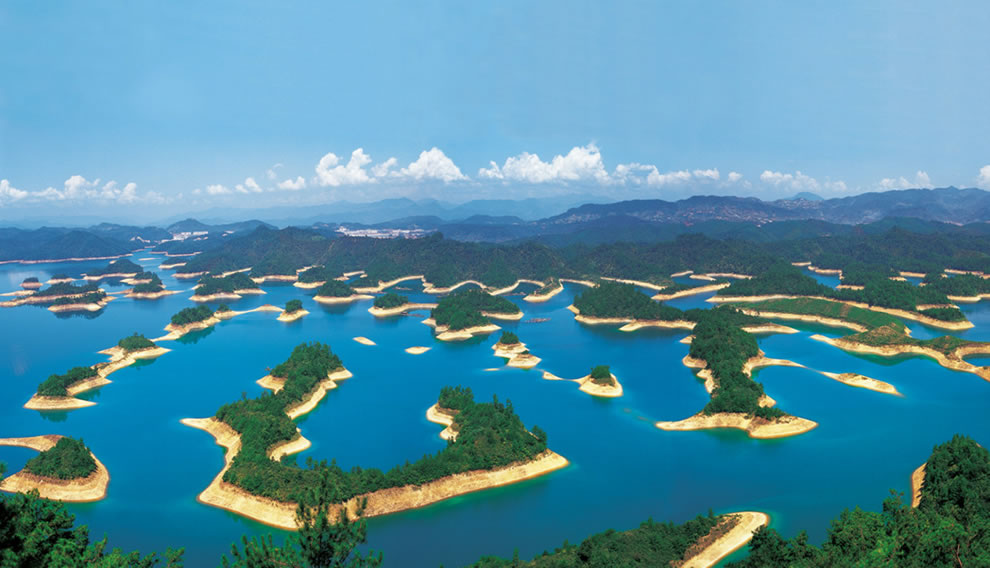
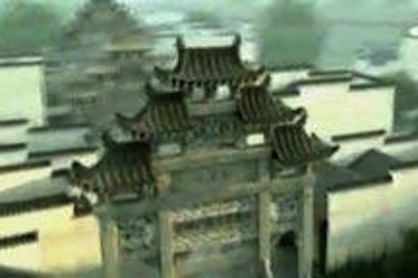
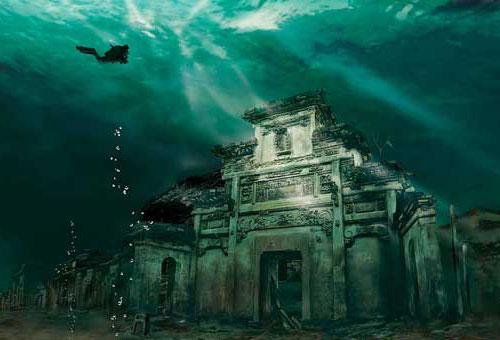
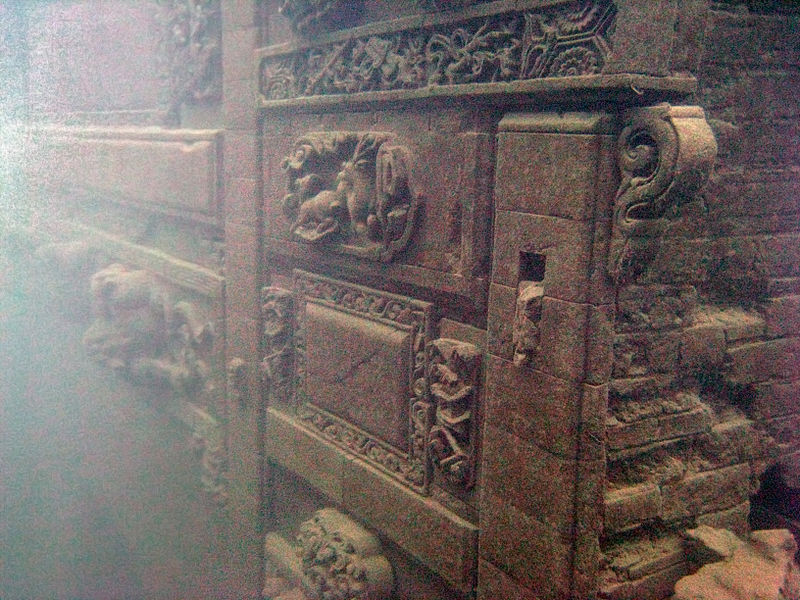
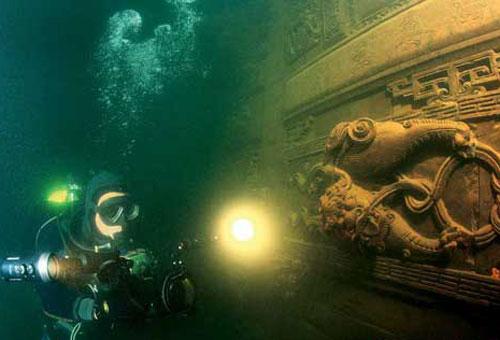

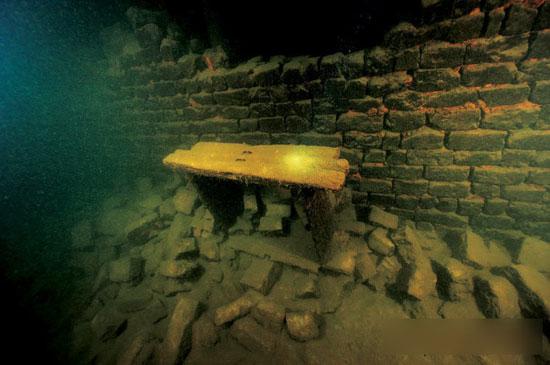
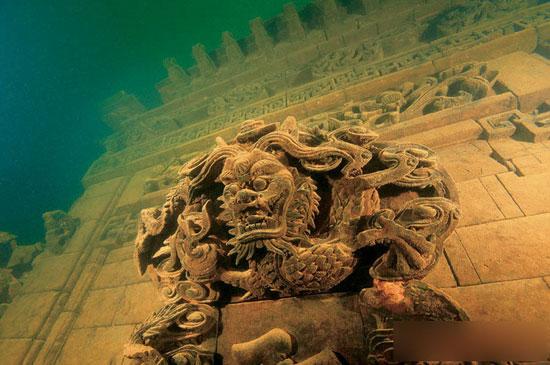


_____________________
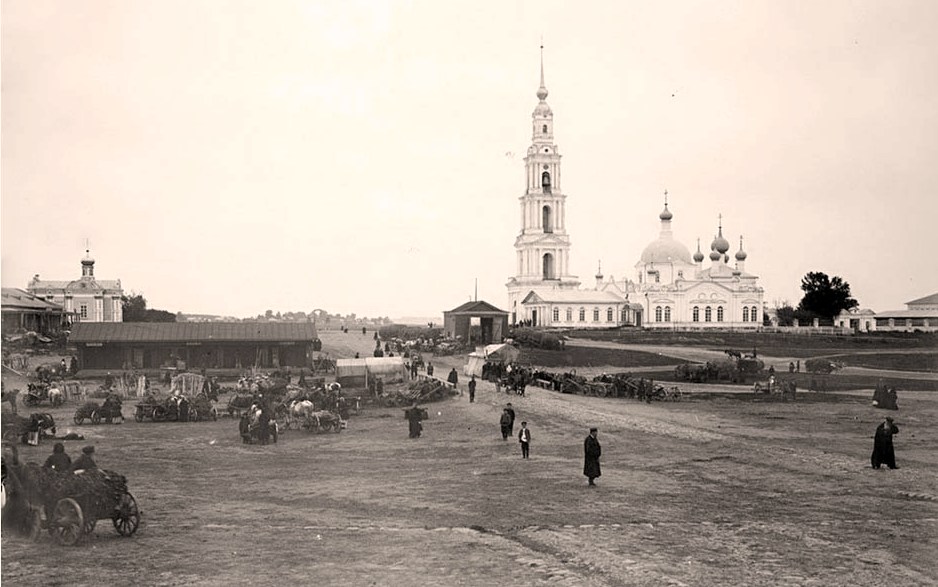
‘The trading town of Kalyazin was settled on the high bank of the Volga. The small river of Zhabnya, flowing into the Volga, separated the town into two parts. The Monastery of St. Nicholas was located on the one bank of Zhabnya, the Trinity Kalyazin Monastery on the other one. In the 18th century, the population of that area grew thanks to blacksmithing, shoemaking, and pottery. Kalyazin also was famous for its lace which was sold in Moscow and St. Petersburg. Trade traffic was growing, and Catherine the Great gave Kalyazin city status in 1775.
‘The Monastery of St. Nicholas quickly became one of the biggest and richest in the region of Tver. Around 1800, a beautiful five-tier bell tower almost 75 meters high (it’s like 25-floor building today) was erected near its main church. Light and elegant, it overlooked the city, and the sound of its bells was heard for kilometers.
‘In 1917, the epoch of the Soviet Union started in Russia under the slogan “We will build a new world.” Of course, the “old world” was supposed to be destroyed. Communists rejected religion, and for starters, banned church bell ringing.
‘In the 1920s, an ambitious project was developed: a few hydropower plants on the river Volga. Accordingly, several cities and hundreds of villages located on its banks were to be flooded. Mologa, Korcheva, Vesjegonsk are just some of the flooded cities. Kalyazin also went under the water of the Uglich Reservoir together with its cathedral, churches, houses, and streets.
‘Some citizens thought it was just rumor and refused to leave their houses. They were flooded together with their property. According to a declassified certificate of NKVD (Ministry of the Interior), 294 lives were lost, but how many people actually preferred to die at home, we don’t know.’ — victorblog
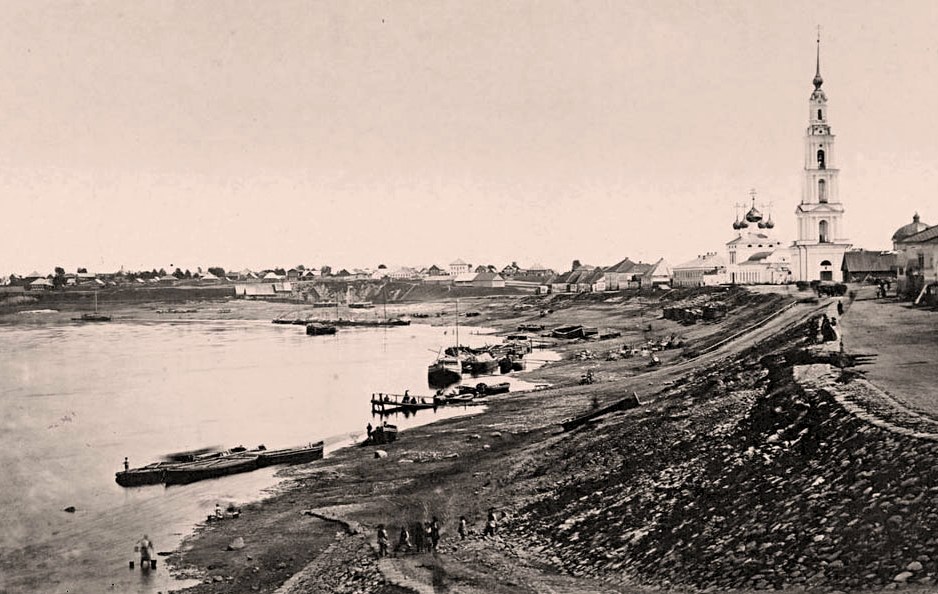

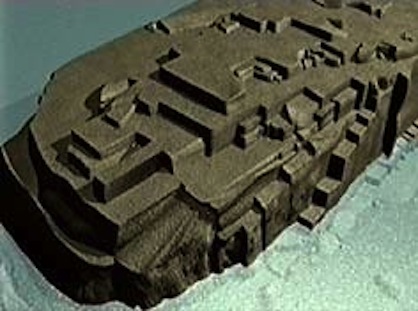
‘The Yonaguni Monument is a massive underwater rock formation off the coast of Yonaguni, the southernmost of the Ryukyu Islands, in Japan. There is a debate about whether the site is completely natural, is a natural site that has been modified, or is a manmade artifact. The sea off Yonaguni is a popular diving location during the winter months owing to its large population of hammerhead sharks. In 1987, while looking for a good place to observe the sharks, Kihachiro Aratake, a director of the Yonaguni-Cho Tourism Association, noticed some singular seabed formations resembling architectonic structures. Shortly thereafter, a group of scientists directed by Masaaki Kimura of the University of the Ryūkyūs visited the formations.
‘The flat parallel faces, sharp edges, and mostly right angles of the formation have led many people, including many of the underwater photographers and divers who have visited the site and some scholars, to the opinion that those features are man-made. These features include a trench that has two internal 90° angles as well as the twin megaliths that appear to have been placed there. These megaliths have straight edges and square corners.
‘Other evidence presented by those who favor an artificial origin include the two round holes (about 2 feet wide, according to photographs) on the edge of the Triangle Pool feature and a straight row of smaller holes that have been interpreted as an abandoned attempt to split off a section of the rock by means of wedges, as in ancient quarries. Kimura believes that he has identified traces of drawings of animals and people engraved on the rocks, including a horselike sign that he believes resembles a character from the Kaida script. Some have also interpreted a formation on the side of one of the monuments as a crude moai-like “face”.
‘If any part of the monument was deliberately constructed or modified, that must have happened during the last ice age, when the sea level was much lower than it is today (e.g. 39 m (130 ft) lower around 10,000 years BCE). During the ice age, the East China Sea was a narrow bay opening to the ocean at today’s Tokara Gap. The Sea of Japan was an inland sea and there was no Yellow Sea; people and animals could walk into the Ryukyu peninsula from the continent. Therefore, Yonaguni was the southern end of a land bridge that connected it to Taiwan, Ryūkyū, Japan, and Asia. This fact is underscored by a rock pillar in a now-submerged cave that has been interpreted as a fused stalactite-stalagmite pair, which could only form above water.’ — collaged


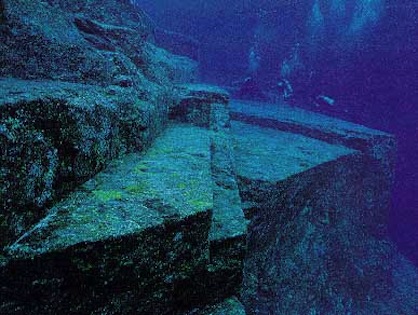
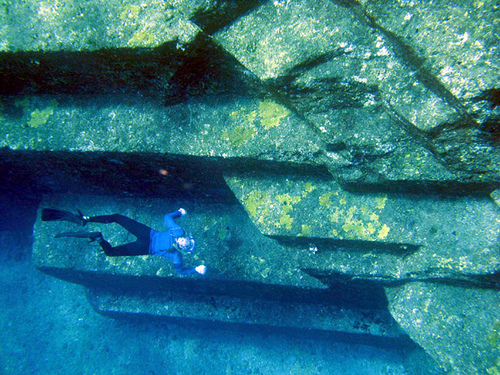
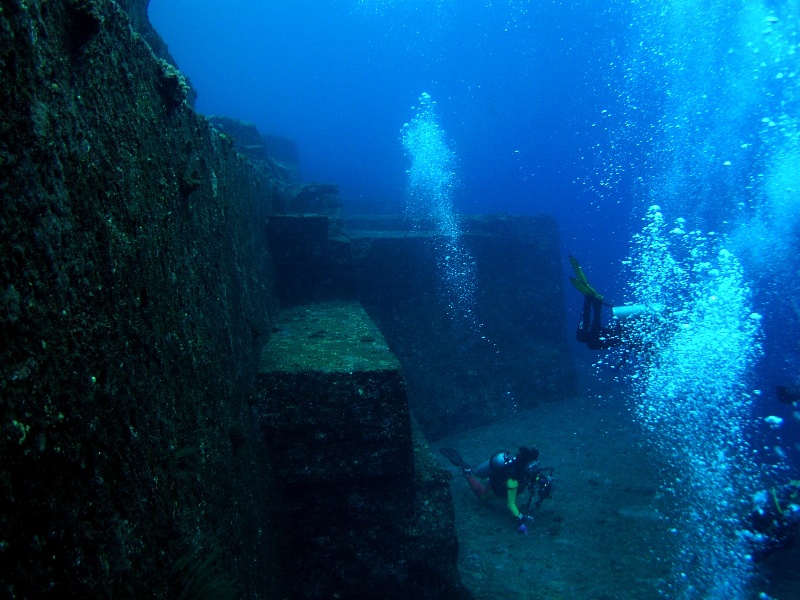
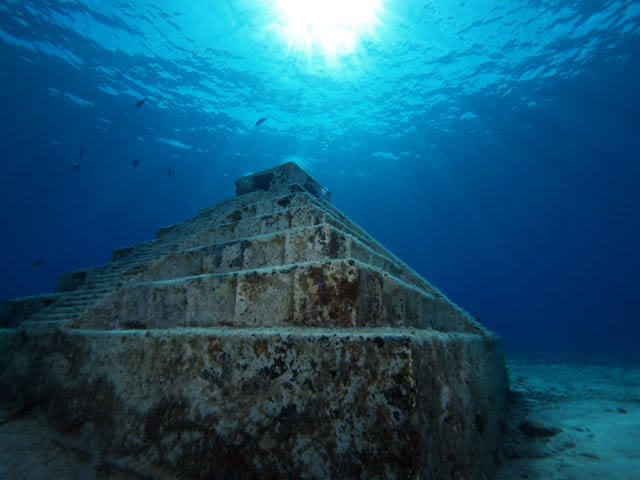
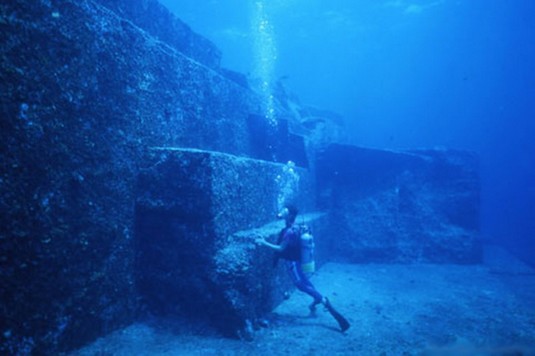
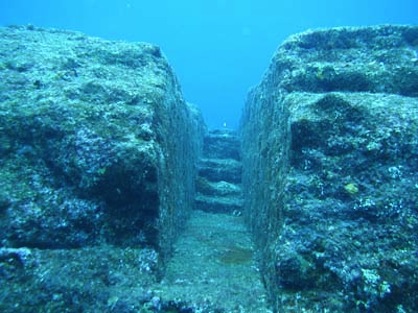
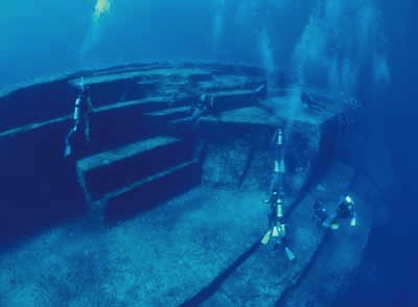
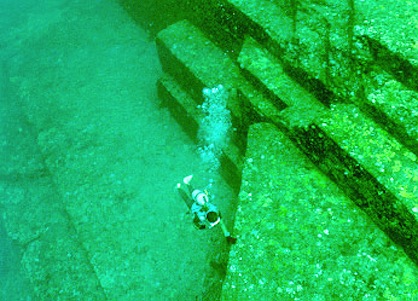
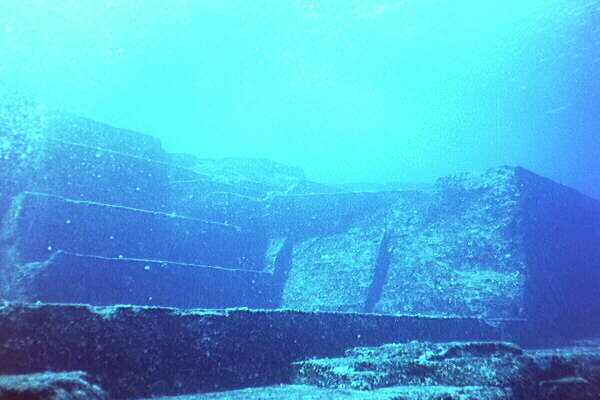
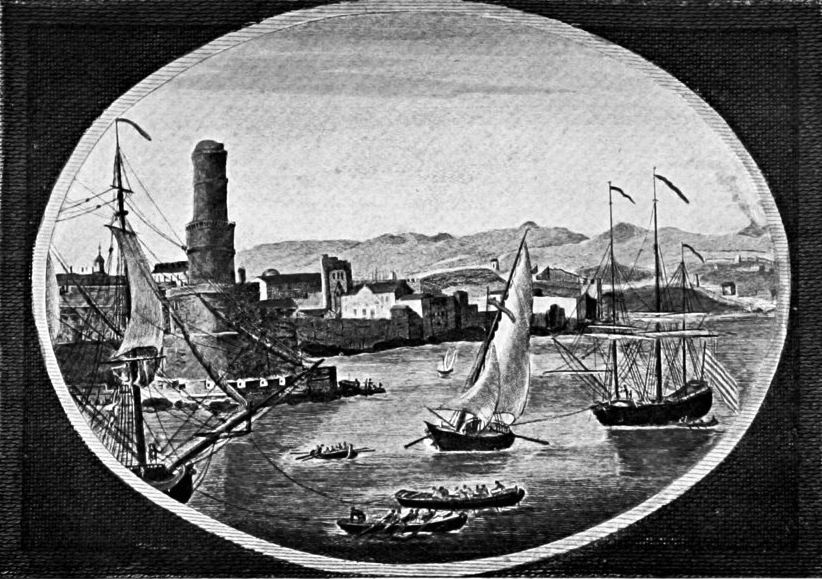
‘Port Royal was a city located at the end of the Palisadoes at the mouth of the Kingston Harbour, in southeastern Jamaica. Founded in 1518, Port Royal was notorious for its gaudy displays of wealth and loose morals and was a popular homeport for the English and Dutch sponsored privateers to spend their treasure during the 17th century. When those governments abandoned the practice of issuing letters of marque against the Spanish treasure fleets and possessions in the later 16th century, many privateers turned pirate and used the city as their main base during the heyday of the Caribbean pirates in the 17th century. Pirates from around the world congregated at Port Royal coming from waters as far away as Madagascar.
‘By the 1660s, the city had gained a reputation as the Sodom of the New World where most residents were pirates, cutthroats, or prostitutes. When Charles Leslie wrote his history of Jamaica, he included a description of the pirates of Port Royal: “Wine and women drained their wealth to such a degree that… some of them became reduced to beggary. They have been known to spend 2 or 3,000 pieces of eight in one night; and one gave a strumpet 500 to see her naked. They used to buy a pipe of wine, place it in the street, and oblige everyone that passed to drink.” The taverns of Port Royal were known for their excessive consumption of alcohol such that records even exist of the wild animals of the area partaking in the debauchery.
‘On June 7, 1692, a devastating earthquake hit the city causing most of its northern section to fall into the sea (and with it many of the town’s houses and other buildings). In addition, the island lost many of its forts. Fort Charles survived, but Forts James and Carlisle sank into the sea. Fort Rupert became a large region of water, and great damage was done to an area known as Morgan’s Line.
‘Although the earthquake hit the entire island of Jamaica, the citizens of Port Royal were at a greater risk of death due to the perilous sand, falling buildings, and the tsunami that followed. Though the local authorities tried to remove or sink all of the corpses from the water, they were not successful. Some simply got away from them, while others were trapped in places that were inaccessible. The decomposing bodies combined with improper housing, a lack of medicine or clean water, and the fact that most of the survivors were homeless, led to many people dying of malignant fevers. The earthquake and tsunami killed between 1,000 and 3,000 people combined, nearly half the city’s population. Disease ran rampant in the next several months, claiming an estimated 2,000 additional lives.
‘Some attempts were made to rebuild the city, starting with the one third of the city that was not submerged, but these met with mixed success and numerous disasters. An initial attempt at rebuilding was again destroyed in 1703 by fire. Subsequent rebuilding was hampered by several hurricanes in the first half of the 18th century, including flooding from the sea in 1722, a further fire in 1750 and a major hurricane in 1774, and soon Kingston eclipsed Port Royal in importance. In 1815 what repairs were being undertaken were destroyed in another major fire, while the whole island was severely affected by an epidemic of cholera in 1850. A final devastating earthquake on January 14, 1907, again liquefied the sand spit, destroying nearly all of the rebuilt city and submerging additional portions.’ — skyscraper city.com
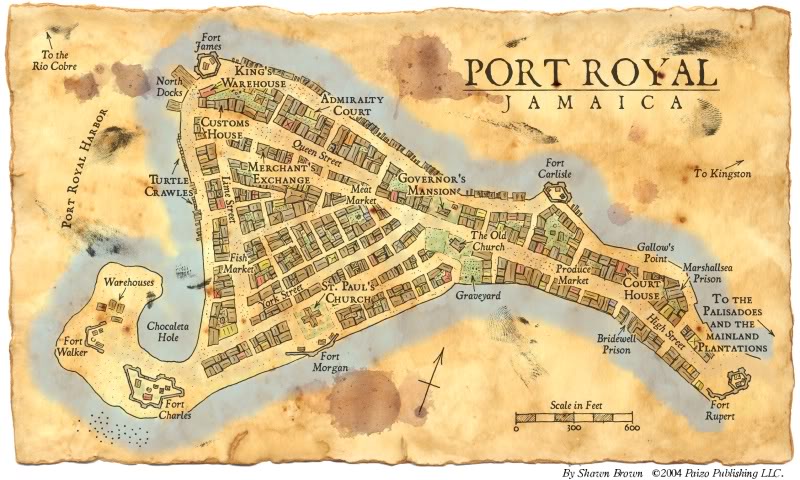
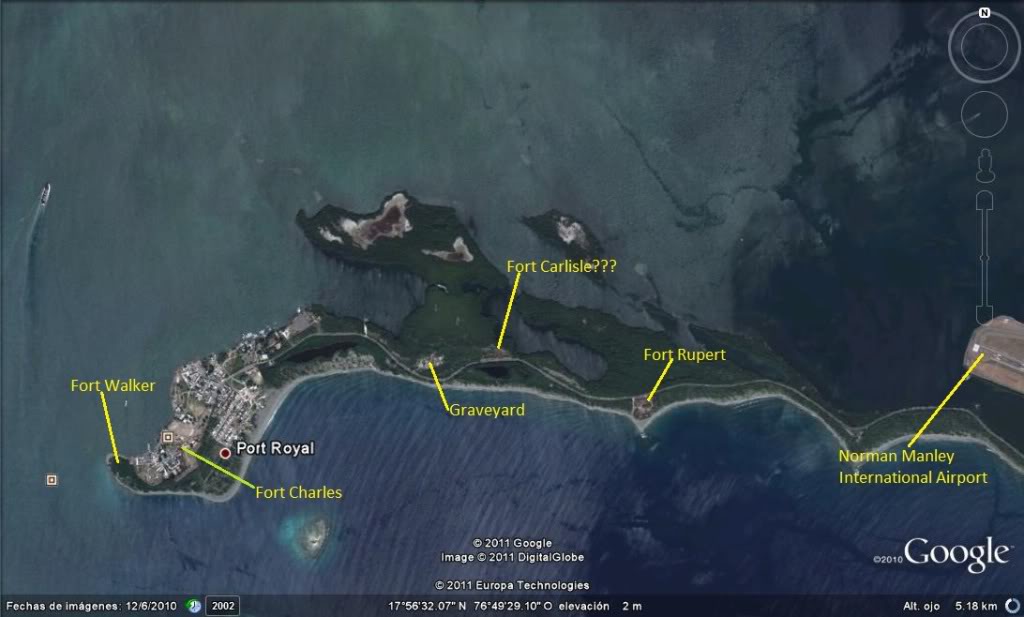
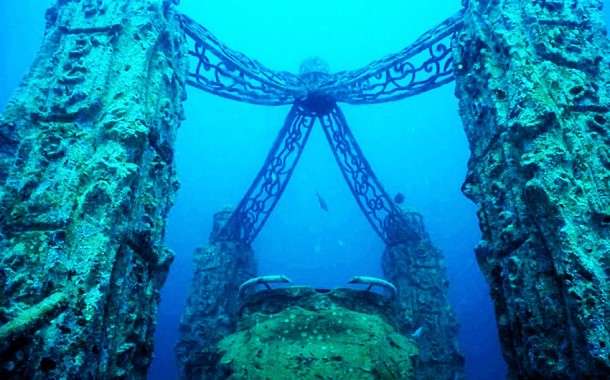
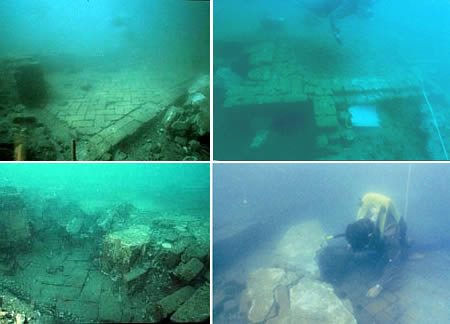
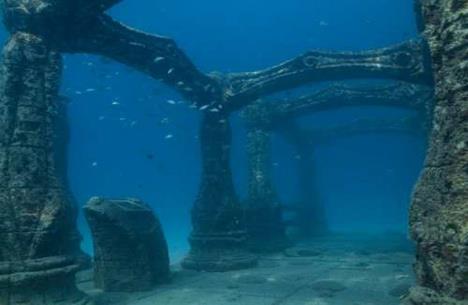

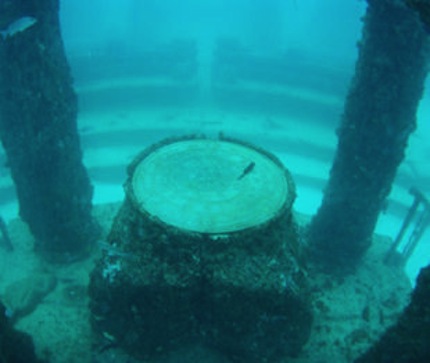
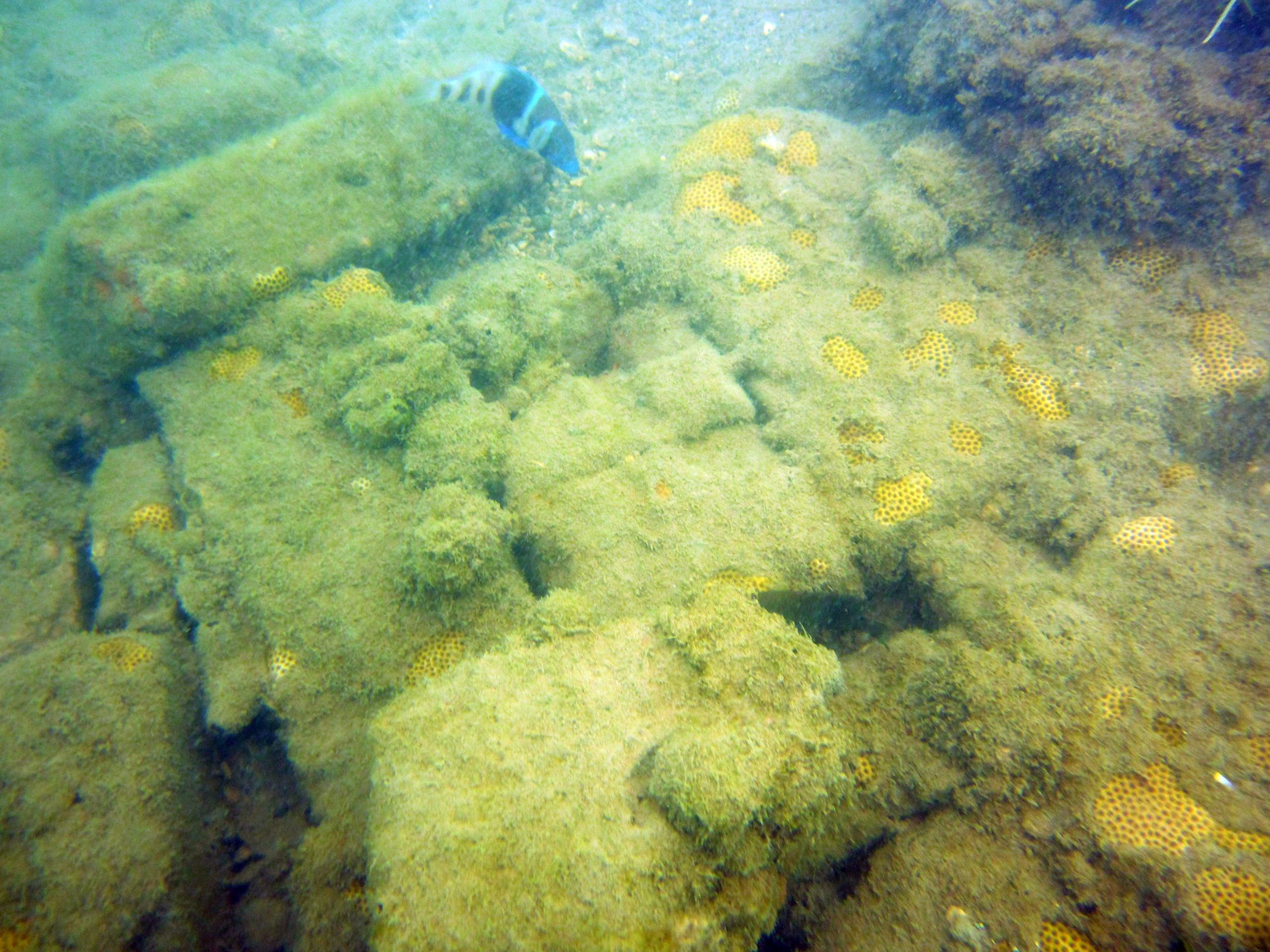
_____________

‘Villa Epecuén was a tourist village that was located in the Buenos Aires Province, Argentina. Now abandoned, its ruins are found on the eastern shore of the Laguna Epecuén, about 7 kilometres (4.3 mi) north of the city of Carhué.
‘Developed in the early 1920s, Epecuén was accessible from Buenos Aires by train. The Ferrocarril Sarmiento line served the Villa Epecuén station, while the Midland Railway and the Southern Railway carried passengers to nearby Carhué station.
‘Tourism was well developed in Epecuén, as vacationers from Buenos Aires would seek the therapeutic salty waters of Lago Epecuén. At its height, Villa Epecuén had the capacity to accommodate 5,000 visitors, while unofficial accommodations allowed for 2000 more.
‘On 6 November 1985, a seiche caused by a rare weather pattern broke a nearby dam first, then the dike protecting the town. Rapidly made uninhabitable, the town saw the waters rise progressively, reaching up to 10 metres (33 ft) at its maximum. The village was never rebuilt.
‘At the time of the catastrophe, there were up to 280 businesses in Epecuén, including lodges, guesthouses, hotels, and businesses that 25,000 tourists visited between November and March, from the 1950s to the 1970s.’ — mentalitch
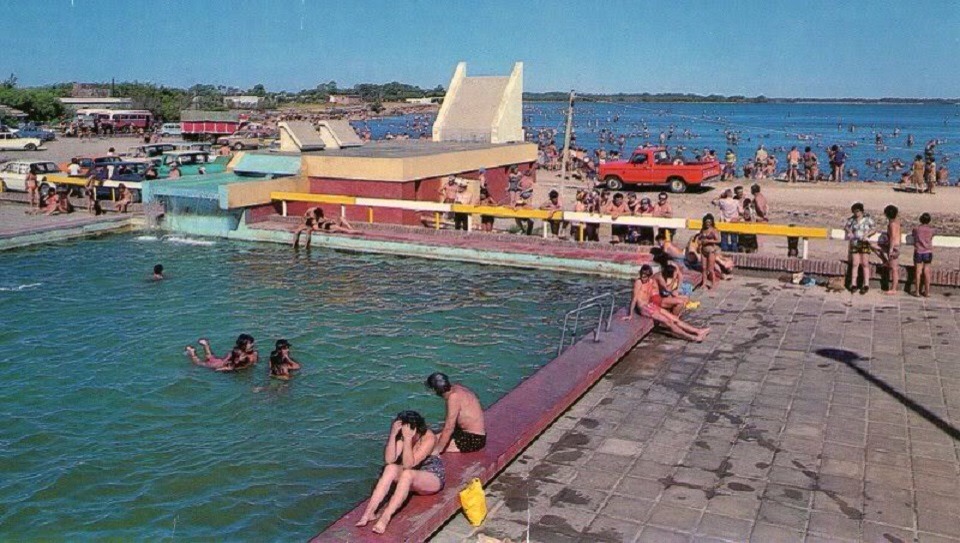

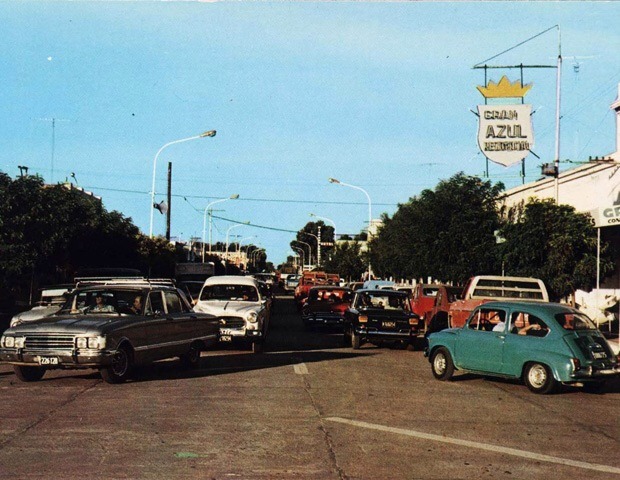
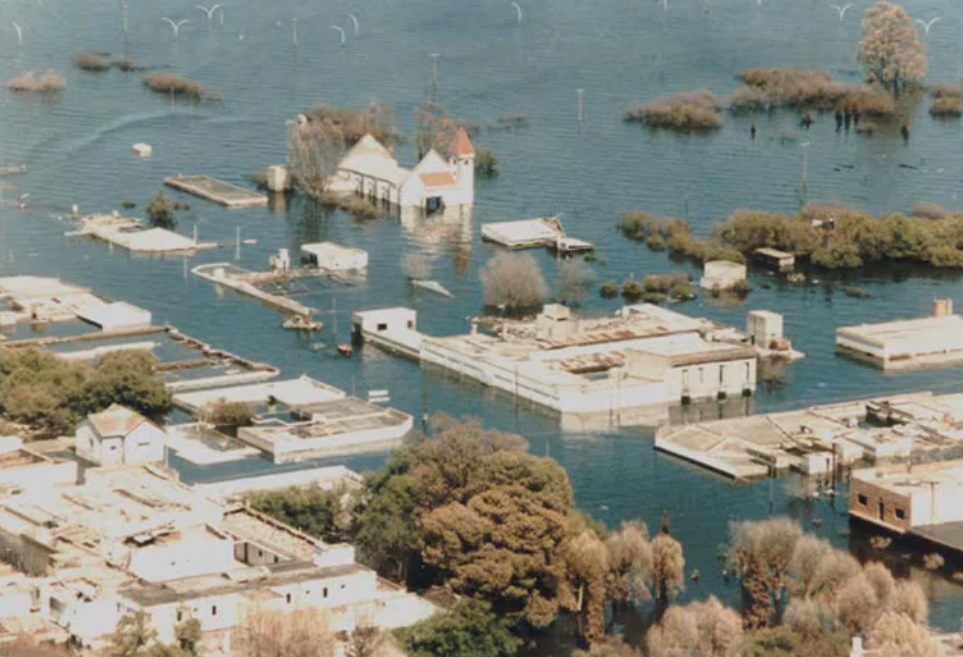
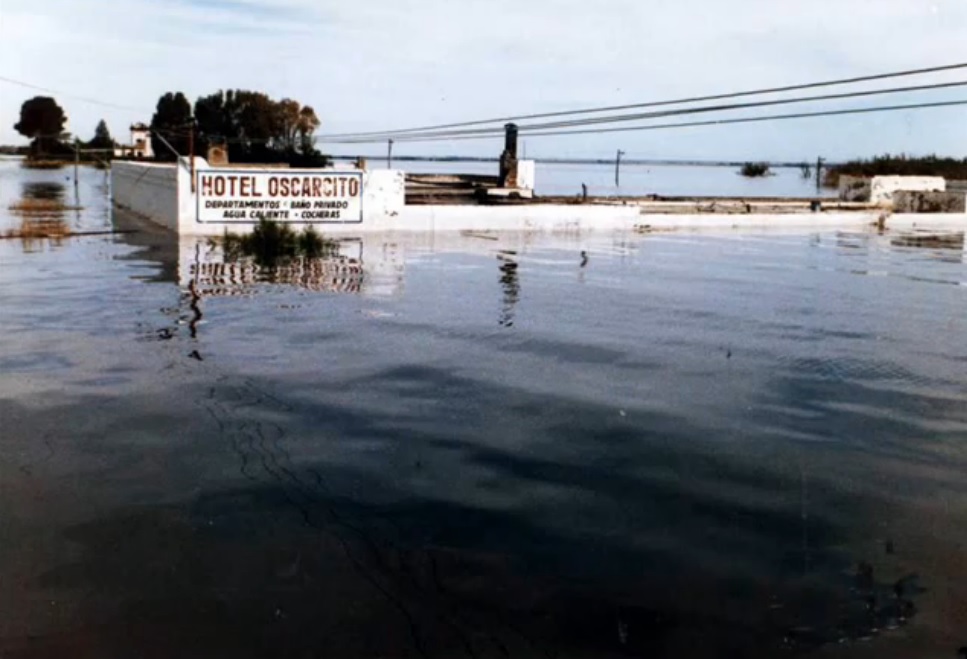


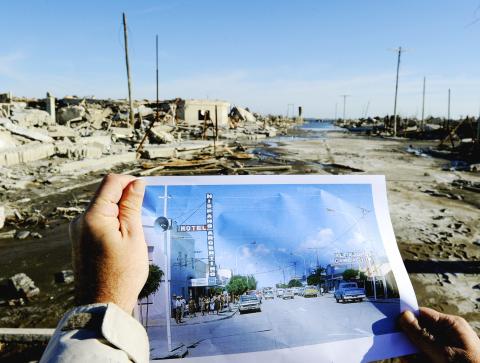
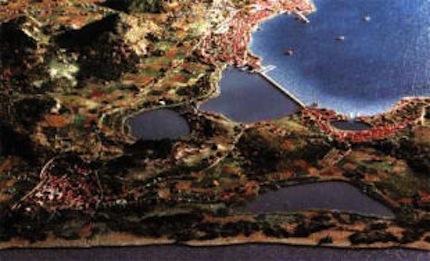
‘The port city of Baiae was commissioned by Marcus Vipsanius Agrippa during the civil war between Octavian and Sextus Pompey (37 BC). The magnificent port was intended for the impressive arsenal of the Classis Misenensis, the most important Roman fleet. It’s construction was entrusted to the architect Lucius Cocceius Auctus, whose ingenuity ensured the port’s connection to Lake Lucrine and Lake Avernus via a navigable canal and to Cumae by a 1 km (0.6 mile) long underground tunnel through which chariets could pass. Ultimately, the naming of the port itself was in honour of Gaius Julius Caesar Augustus.
‘Once complete, Baiae offered a comprehensive array of administrative naval services: warehouses for the storage of food and supplies, cisterns for potable water, dry docks for hull maintenance and workshops for the repairing of sails. Other, more personal needs were equally provided for: recreational facilities, the Temple of Poseidon, and discreet brothels.
‘With the passing of millennia, the original complex has been fated by bradyseism (caused by volume changes in an underlying magma chamber and/or hydrothermal activity). In the late fifth centuary Flavius Magnus Aurelius Cassiodorus Senator noted that the outer breakwater of the port had fallen into disrepair; in the following centuaries it disappeared completely, reuniting Lucrino with the sea. This lateral movement of the coast continued until 29 Septmber 1538 when an eruption occurred generating the so-called New Mountain, distroying the village Tripergola and reducing Lake Lucrino to little more than a pond.
‘Baiae again came to light via aerial photography taken during World War II. Pictures taken illustrate the topography of the extensive portal complex which covers an area of approximately 10 hectares. Buildings used as warehouses could be identified along with various column arrangements denoting courtyards of residential houses. Indeed, most of the mapping of the area has been compiled from studying such photographs.
‘The details pertaining to the port city’s construction have, however, been obtained via underwater surveys and observations. The walls and pillars rise from a few inches to more than a meter above the sea-bed and their stonework bears witness to the various building methods used, particularly reticulated work. Pathways, floor mosaics, ceramic wares and even the indication of frescoes can still be found in-situ.’ — The Underwater Archaeology Park of Baiae
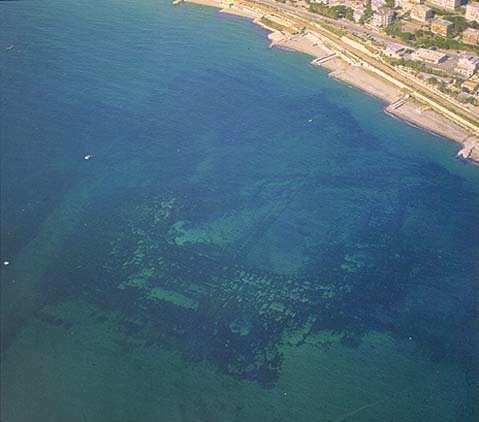
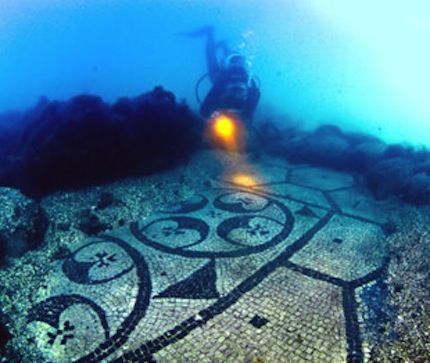
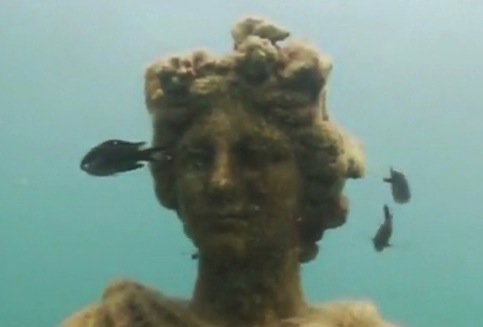

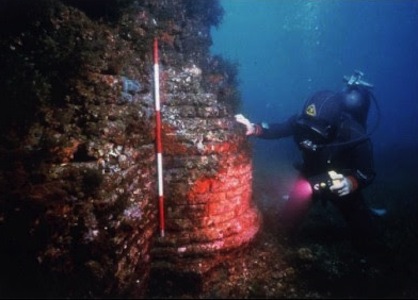
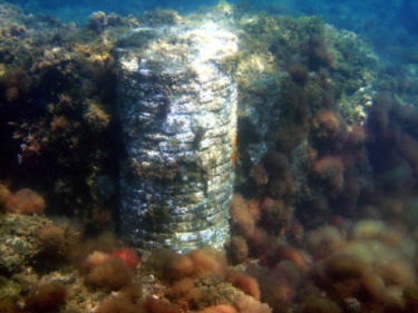
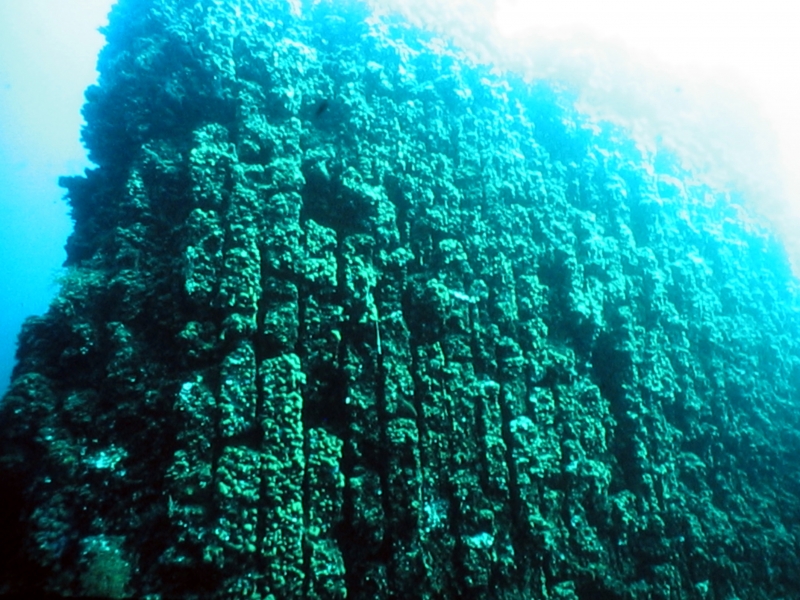
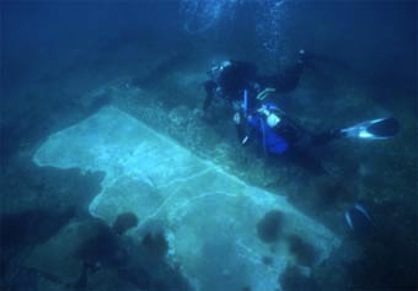
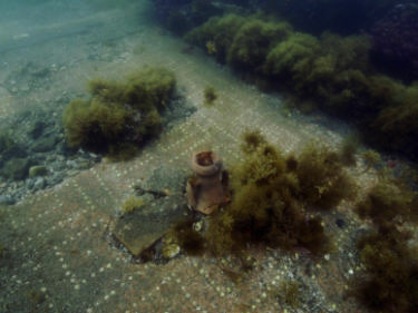
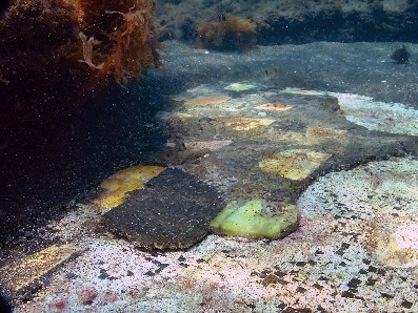
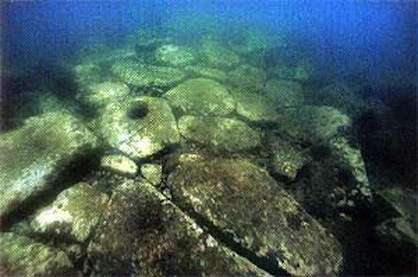

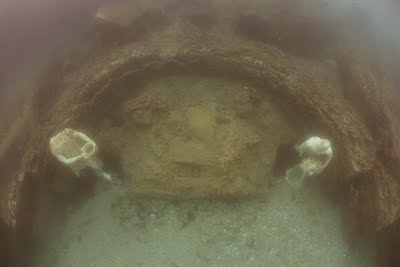
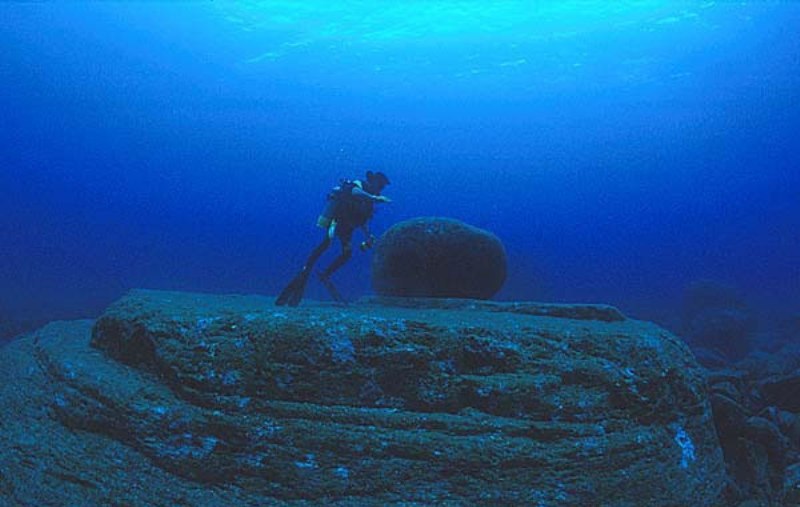
_____________
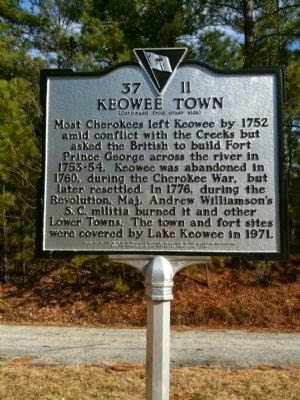
‘Revered for its emerald waters and abundant recreation, South Carolina’s Lake Jocassee area was filled with rich history before the dam was built in 1973. South of where the dam and the hydroelectric station are currently located was once Keowee Village or Keowee Town, the capital of the Lower Cherokee Indians. The lake’s name “Jocassee” is derived from the Cherokee language and means “Place of the Lost One.”
‘The Cherokee lost their land to settlers, and then the settlers lost the land to the waters of the new lake. Both Lake Jocassee and the neighboring Lake Keowee were formed as a result of the construction by Duke Power for their Keowee Toxaway Project. With the building of the dam in 1973, the waters of Whitewater River began to flow upstream for the first time as Lake Jocassee covered the town.
‘Jocassee Lake Dive Shop owner and technical instructor Bill Routh was the first to discover the Whitewater Bridge, Camp Jocassee for Girls, and the Attakulla Lodge which rests below 300 feet of water. A friend of Routh’s was the first to discover the Mount Carmel Cemetery, made famous by the 1972 film Deliverance, which was produced the year before the dam was constructed and the valley was lost.’ — blueridgeoutdoors
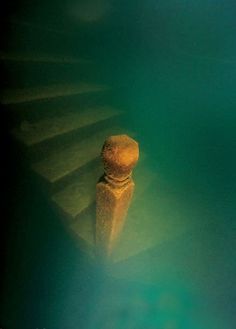
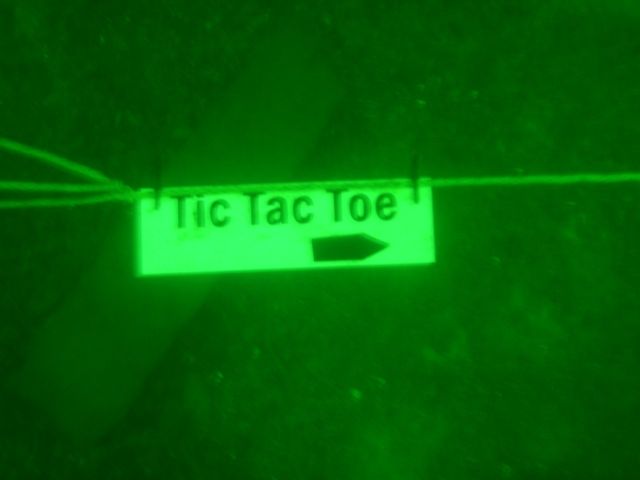
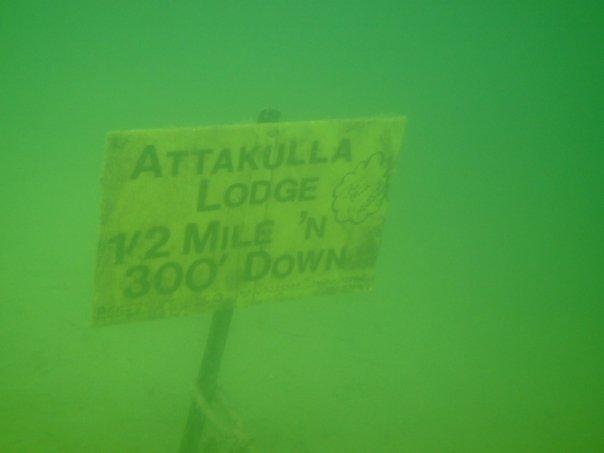
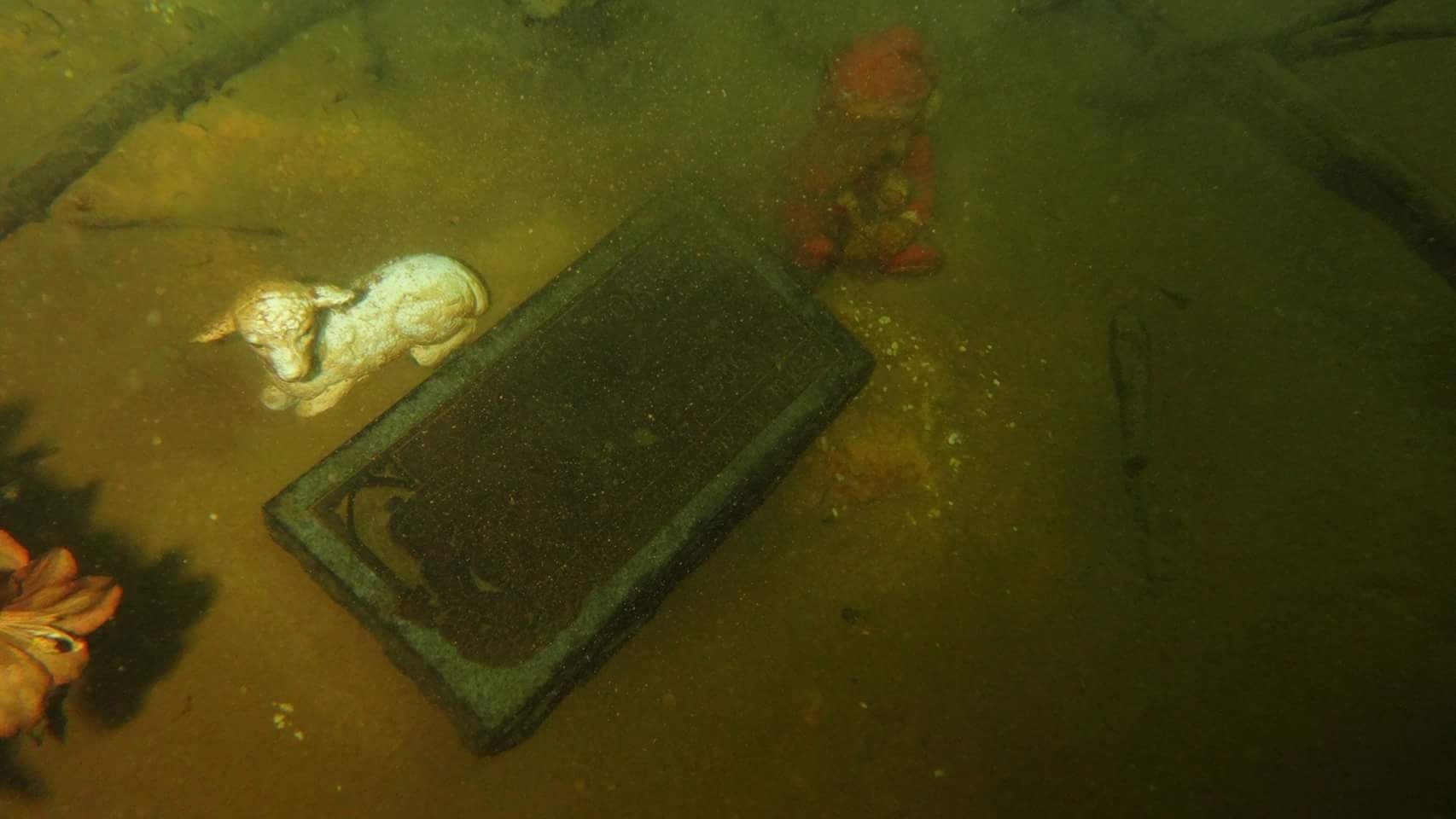

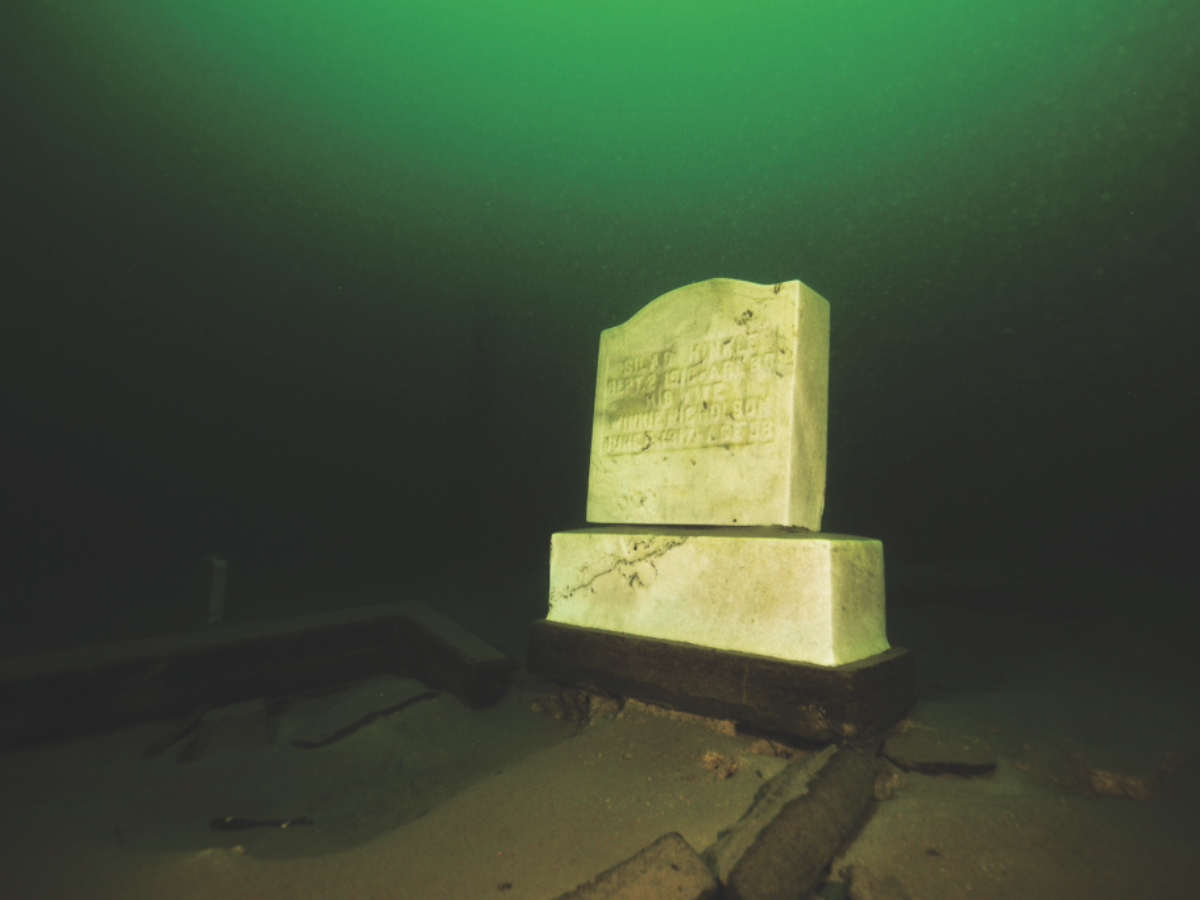
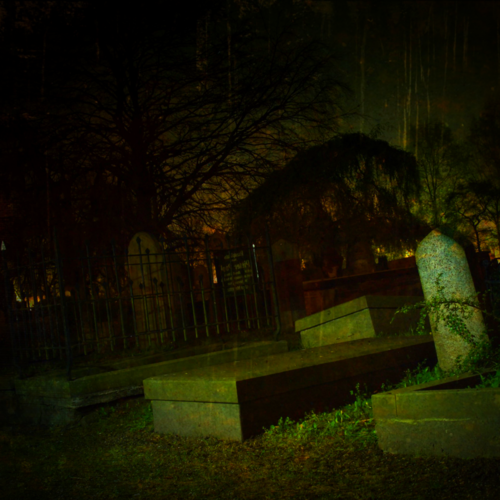
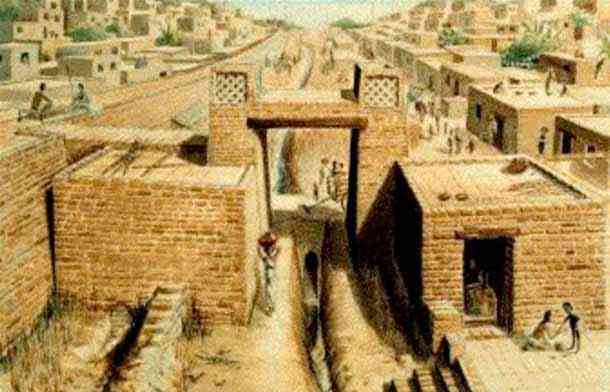
‘Evidence of an ancient “lost river civilisation” has been uncovered off the west coast of India, the country’s minister for science and technology has announced. Local archaeologists claim the find could push back currently accepted dates of the emergence of the world’s first cities. Underwater archaeologists at the National Institute of Ocean Technology first detected signs of an ancient submerged settlement in the Gulf of Cambay, off Gujarat, in May 2001. They have now conducted further acoustic imaging surveys and have carbon dated one of the finds.
‘The acoustic imaging has identified a nine-kilometre-long stretch of what was once a river but is now 40 metres beneath the sea. The site is surrounded by evidence of extensive human settlement. Carved wood, pottery, beads, broken pieces of sculpture and human teeth have been retrieved from along the river banks, according to a report in the Indian Express newspaper. The vast city — which is five miles long and two miles wide — is believed to predate the oldest known remains in the subcontinent by more than 5,000 years. Theorists are postulating that the area where this city exists was submerged when the ice caps melted at the end of the last Ice Age.
‘If confirmed, the find would also push back the date of India’s earliest known civilisation by 5000 years. The Harappan civilisation has been dated to about 2500 BC. The newly identified site “looks like a Harappan-type civilisation but dating way back to 7500 BC,” said minister Murli Manohar Joshi. It was generally believed that a well organized civilization could not have existed prior to 5500 BP.’ — collaged
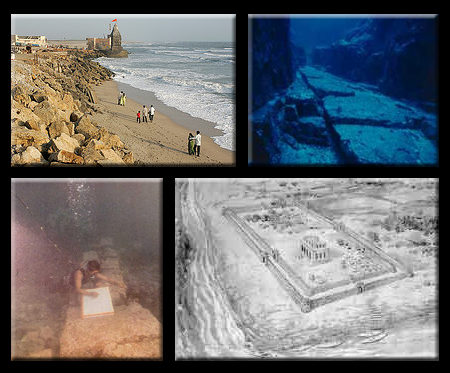
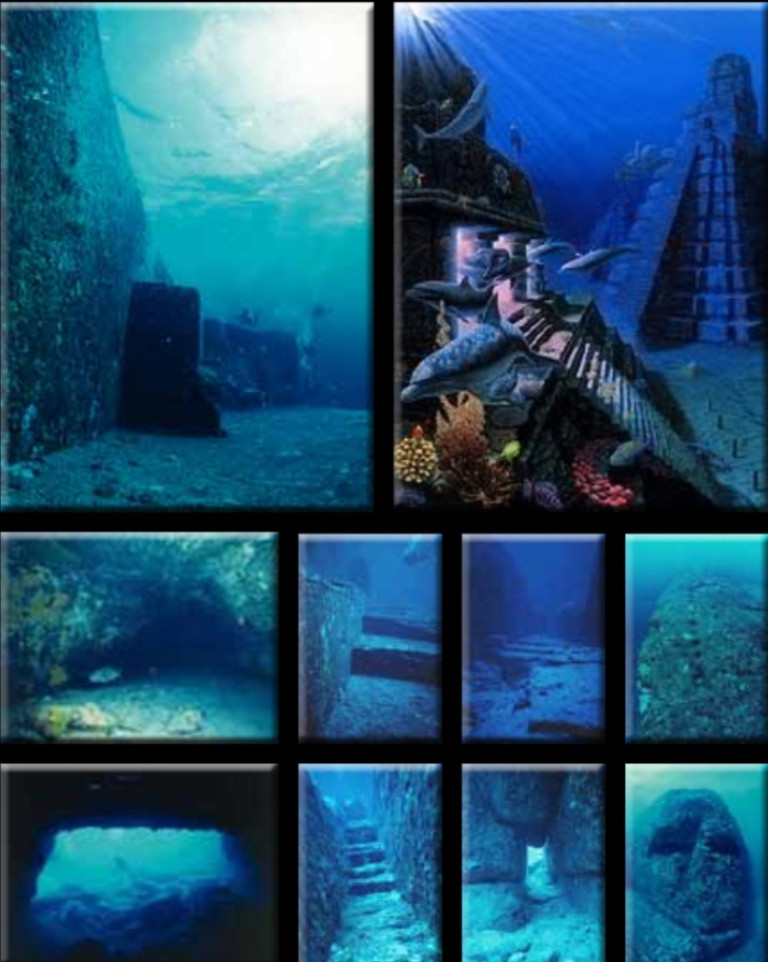
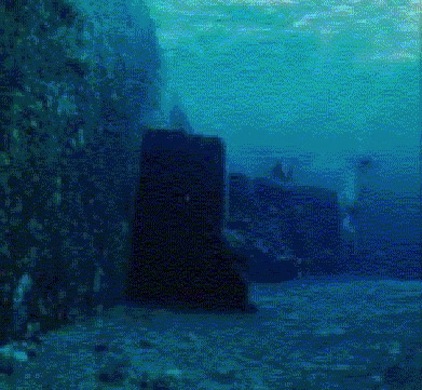
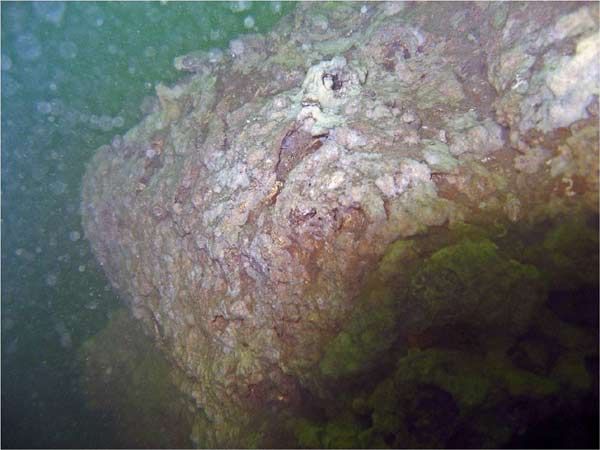
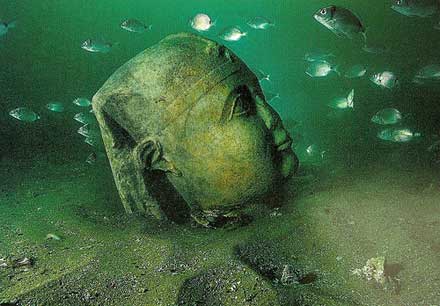
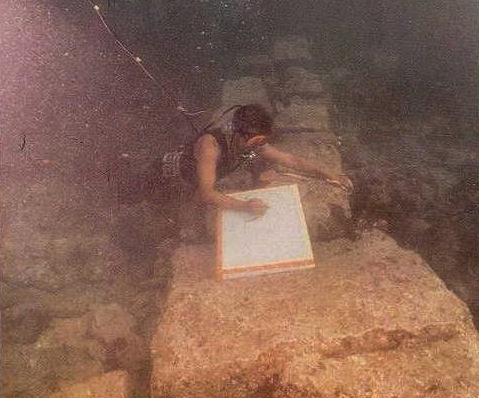

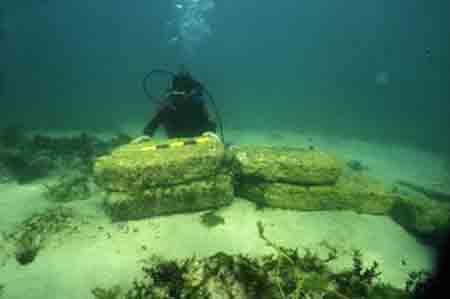

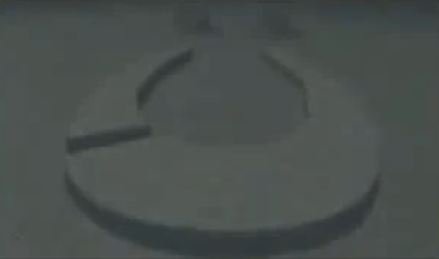
_______________
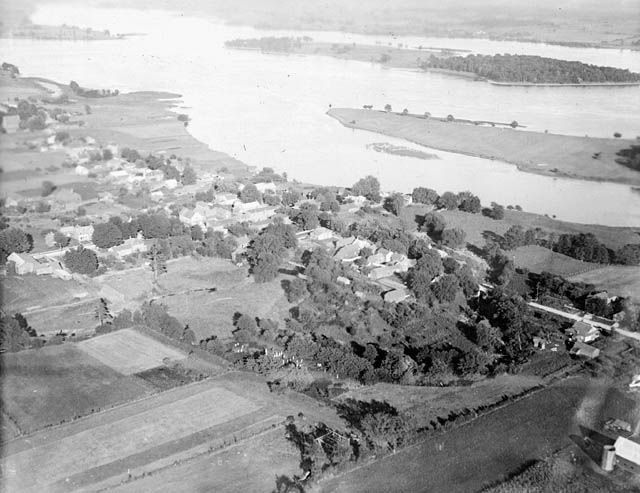
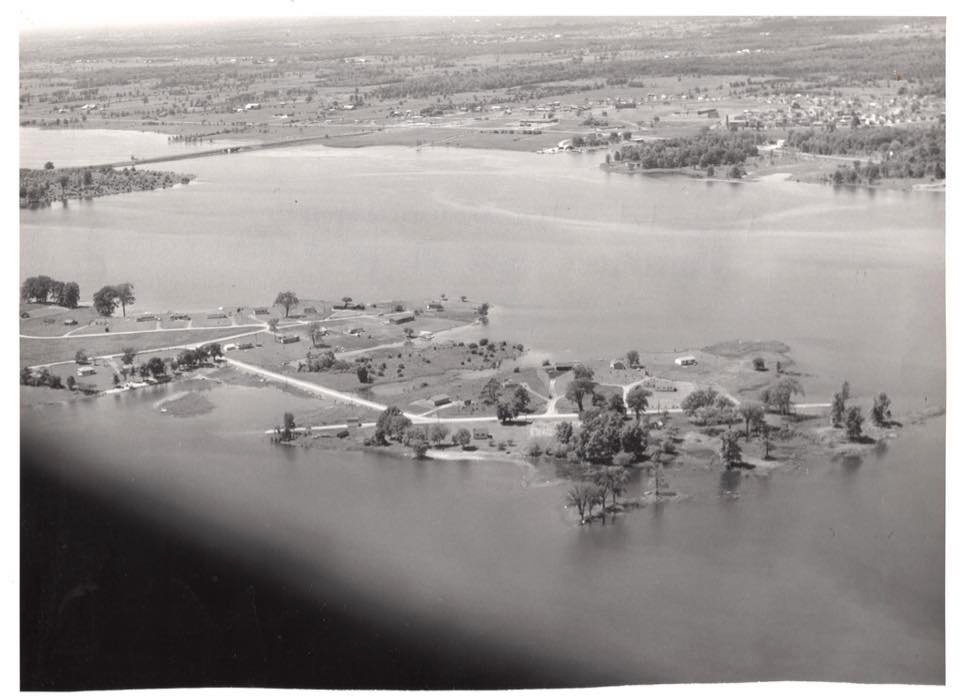
‘The Lost Villages are ten communities in the Canadian province of Ontario, in the former townships of Cornwall and Osnabruck (now South Stormont) near Cornwall, which were permanently submerged due to the creation of the Saint Lawrence Seaway in 1958.
‘The flooding was expected as the result of the Moses-Saunders Power Dam construction, which began in August 1954. In the weeks and months leading up to the inundation, families and businesses in the affected communities were moved to the new planned communities of Long Sault and Ingleside. At 8 a.m. on 1 July 1958, a large cofferdam was demolished, allowing the flooding to begin. In all, approximately 6,500 people were displaced by the project, 530 buildings moved, and countless homes, schools, and businesses demolished.
‘Some communities were relocated rather than abandoned altogether. Many materials including several historic buildings from the communities are now preserved in a museum in Ault Park near Long Sault. Some high points of land in the flooded area remained above water as islands and can be visited.
‘In some locations, a few remnants of sidewalks and building foundations can still be seen under the water, or even on the shoreline when water levels are sufficiently low. Elsewhere, divers can follow the old roads and sidewalks of the towns underwater.
‘The “Lost Villages” were: Aultsville, Dickinson’s Landing, Farran’s Point, Maple Grove, Mille Roches, Moulinette, Santa Cruz, Sheek’s Island, Wales, Woodlands.’ — ar-tour


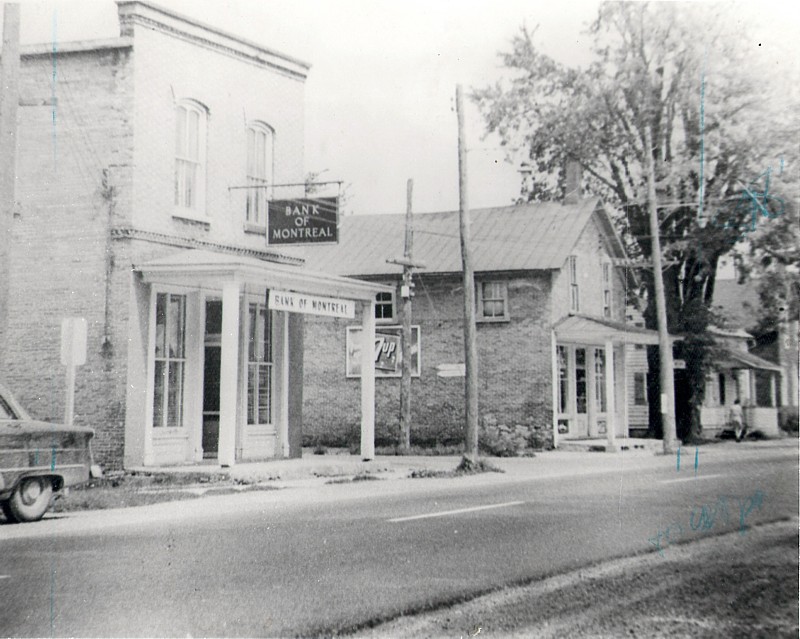

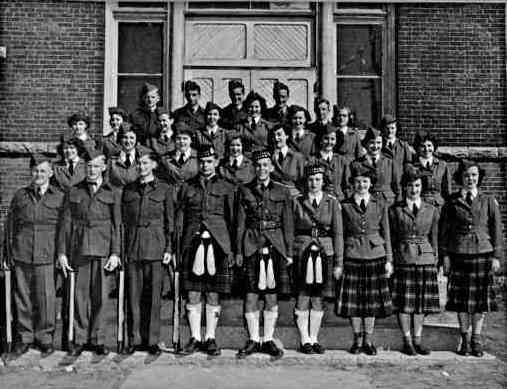

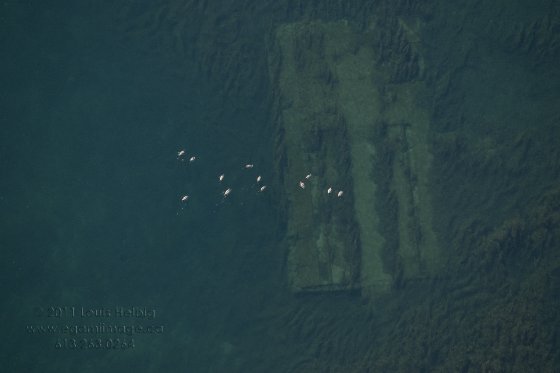

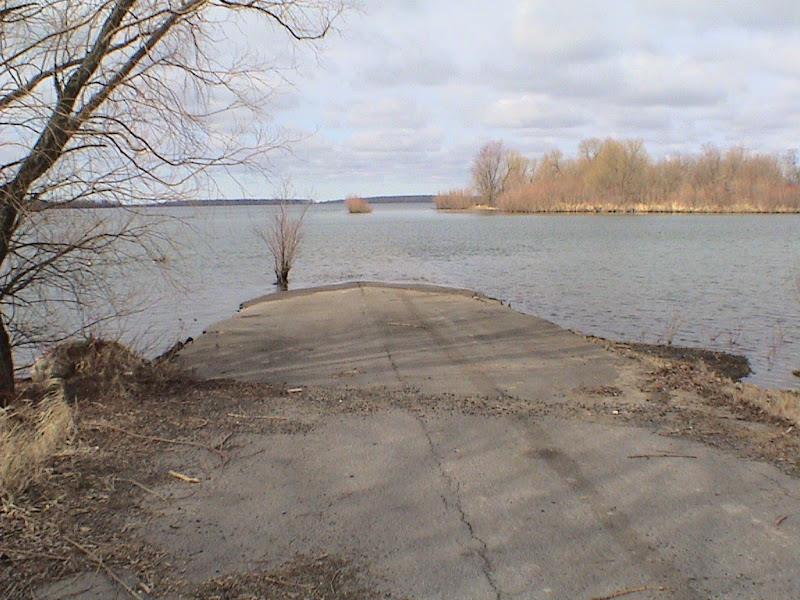
*
p.s. Hey. ** Shane Christmass, Ha. Now ‘Short Night of Glass Dolls’, that I know, and, yeah, I too think it’s cool. Mm, I cannot remember where I was when Night Stalker was doing his thing. I think in LA, but … blur. Thanks about the books. Especially the Selffuck one because they/he still hasn’t sent me the books I ordered months ago. No, I don’t think I’ve ever been invited to a festival there, but I assume it would be pretty costly to bring me or anyone in from this far away, and I’m not the kind of crowd magnetising superstar that would make such a money outlay feasible, I assume (again). ** ae, Hi! Grocery jobs sound tiring and hard on the backs or something. I hope you two get to crossfade into something more … worthy? Ubuweb is doing an erotic zine? I thought that place was kind of dead to new adds. I’ll visit. Anyway, cool. Thanks a lot for the shopping link. That looks like a handy site to know about, and I didn’t. Some artists built an online or viral or digital or whatever Dream Machine. It’s in a post here coming up in a week or two. Thanks much for the info and for everything. Happy Thursday. ** David Ehrenstein, Really, ‘act like Brian’? That’s wild. Jagger must have hated that. ** Tosh Berman, Hi, Tosh. Jack is back! I was watching the inauguration off and on all day/evening yesterday, and it was so amazing not to see a single thing about or showing that piece of shit the entire day, at least on the channel I was watching. ** Dominik, Hi! Speaking as a fellow lover of editing, it’s often more fun to edit texts or scripts that aren’t that hot, you know? Where whatever your edit is, you know it’s all uphill. The fiction thing is something I’ve been working on off and on for quite a while. It’s an attempt to transform the material/script of the doomed ARTE TV series project into a work of script-like fiction. I’ve tried a bunch of approaches that haven’t worked, but I’m trying a new one now that seems promising. If it works it’ll be a novella co-authored by Zac and me. The Pinault thing will be in person, so it’ll happen when that’s possible, Who knows when that is because there seems to be a strong chance that the govt. is going to announcement confinement tonight, mega-ugh. I’m finally seeing Zac today and hopefully frequently now, although if the confinement happens, who knows. How’s stuff where you are? Ha ha, nice and weird love! Love where every hair on its head is roller coaster and its eyes are shrinking rays and its body is an escalator, G. ** Bill, Hey. Ultra best of luck with the work swamp this week. I’ll be saving you a blog seat until further notice. ** Misanthrope, I think so too. Yeah, don’t get me started on opioids. My usual pragmatic viewpoint and demeanor go out the window. Hope Kayla sails through her bout with the Co-monster. Most seem to. Sounds like she’s been smart about it. ** _Black_Acrylic, Hi, Ben. Have fun with the class today. Know you will. And big up on the general return of order. These days, that’s manna. ** G, Hi, G. I’m glad you liked Jack’s stories. Wow, thank you so kindly for those amazingly kind words about my poem. Hm, I think I wrote that poem when I was taking poetry classes in city college, so I would guess it dates from ’73 or ’74? Anyway, wow, thanks so much! You good? ** Kyler, Hi, K. I think I did know you’re a witch. I mean, what aren’t you, let’s face it. You got the vaccine? Whoa, lucky you. I’m not in the qualifying camp here yet. No pre-existing conditions and the age requirement is 80 or older thus far. ** Brian O’Connell, Hi, Brian. So happy you dug it. Jack’s writing is ace. Gotcha on the dead witch novel. Dude, my past is littered with half-finished things with concepts that seemed exciting but were lame-ass. High fiver or low five. Yeah, I had the inauguration on all day either in the background or being watched. It was comforting and relaxing just as it seemed like it was going to be. Twitter = upside down cross and clove of garlic (for me). There’ve been these worker guys in my apartment tearing everything up looking for holes mice could enter and exit from for three days, and that means I’ve been stuck here supervising, but today I’m going to kick them the fuck out by noon or so because I have shit to do. Dinner, out, nice. Boy, I miss that. Have a great, great one! ** Right. Underwater dead cites, what’s not to like, am I wrong? See you tomorrow.




 Now available in North America
Now available in North America 
Hi – ah I’m sorry, my partner is doing an erotic art zine and I am helping them with mailorder. Grocery stuff wears on my partner a lot – i think they would like to try work at this organic vegetable farm this spring-fall instead. I dont mind the work, myself. I have worked as a cheesemonger for years now and its a laid back enough job to pay the bills. Ultimately the goal is to figure out how we both can live on just artistic pursuits but i think it would come with a lot less stability. Little Black Cart is a fantastic distro and publisher and really wrestles with incisive critique and philosophy free from a lot of orthodoxy. Theres an anarchist book store in town here that stocks most of their titles and semiotexte / zerobooks / etc. where i end up spending a lot of my check. Loved todays post – speaking of Port Royal and pirate culture, have you read P.L. Wilson’s “Pirate Utopias”?
Lovely Watery Day
Cue James Taylor
Dennis, So here’s another phobia of mine: large expanses/bodies of water, as well as pics and videos of stuff under those bodies of water. Really creeps me out. Those, and pics of outer space. I can’t do them. That one of the statue head is terrifying to me. Not your fault, of course.
My mom talked to Kayla yesterday and said she sounded a lot better. She told her that. Kayla said, “Well, I took a hot bath earlier.” Huh, hot baths cure the ro?! Hahaha. But yeah, she’s fine, as is the rest of her family down there in MS.
I’m sitting here waiting on a co-worker to get back to me to start on a big product. Will take all day. And I have to see my regular doc today for the regular 3-month med-refill appointment. Oy vey.
Otherwise, bopping along, just bopping along.
Oh, wait! Soooo…the friend I saw the movie with the other night…her husband was exposed to the ro at work. Guy where he works popped positive. He last worked with the guy last Friday. My friend’s husband got the rapid test and was negative. Is waiting on results of the not-rapid test now. So I guess I was…….exposed? I don’t know. He’s got no symptoms, my friend has none, and I have none. I’m sure we’re fine. But better safe than sorry? I won’t get a test unless I get symptoms. Really, if the guy makes it to this Friday without symptoms, I’m sure he’s A-OK.
This whole thing is a mess.
Hi!!
I can’t tell you how much I love you for this opinion on editing, haha! I feel exactly the same! My ultimate, ultimate dream is to edit gay romance books – you know, the type that can’t exactly be called “high literature”, haha.
Ah, yes, the ARTE series! I remember talking about it a pretty long time ago. I’m really glad you found a promising-looking approach this time; I keep my fingers so crossed for the survival of this project! You put so much time and energy into it.
Ugh, no, another wave of confinement… I hope it doesn’t happen. But… I also kind of hope it does and it speeds things up? I think maybe we’re in a similar situation: no restaurants or gyms or schools open, etc. Our government made sure to buy some great experimental Russian vaccine, though, so it’s looking up for us, yay, Jesus…
Holy crap, haha, I have no idea how to even approach this love! Love having plastic surgeries ‘til he looks exactly like a human-sized tarantula, Od.
Here in Yorkshire we are under siege from Storm Christoph at the moment, although Leeds has not been getting hit quite so badly as other areas such as Manchester and South Wales. When turning on the local news, there are plenty of scenes showing residents bailing out all the water, and there was even a body spotted in a flooded river somewhere near Cardiff Castle. I always feel such stories are harbingers of apocalypse when they appear.
Hope Zac is all recovered and in good spirits, Dennis.
All this submerged beauty today. Reminds me I really enjoyed this recently:
https://letterboxd.com/film/the-lure/
Bill
Brian Jones seemed to bring an experimental quality to the Stones that they pursued in 1966 and 1967. They then returned to blues-rock instead of continuing any interest in psychedelia or baroque pop when Mick Taylor joined. I have a hard time seeing Mick Jagger producing an album by the Master Musicians of Jajouka (or giving it such a weird, proto-dub mix.)
Did the government in fact announce a more stringent lockdown? I had a strange dream last night in which I was traveling to Berlin to meet someone I only know through social media and acquiring dozens of bootleg DVD-Rs of rare films to bring back home. When I woke up, I could read the pent-up impact of this extended isolation into it.
Agree with your Stones critique, Steve. Brian could play almost any instrument. In many ways, with his drowning, the color washed out of the Stones sounds.
What a beautifully calming post.. a mysteriously relaxing treat. It’s my dream to one day dive like this and explore under water realms… This post made me miss swimming even more. Sometimes I think I only really feel calm when I’m under water. I used to swim loads before this stupid pandemic. I’m saving this post for many future returns, thank you for providing this respite.
I’m OK – good would be a bit of a stretch at the mo… just trying to focus on work so I can save up money to go see my family in Canada as soon as this insanity is over – hopefully this year? But who knows anymore. How are you getting on with 2021? Do you have any upcoming events re ‘I Wished’? I hope so. Big kiss.
This was a fascinating start to my weekend (Israeli weekend is Friday-Saturday). Some Western Massachusetts towns were flooded to form the Quabbin Reservoir. Similar story to your Saint Laurence Seaway example. David Foster Wallace named the town of Enfield, MA where the tennis academy is located in Infinite Jest after one one of the flooded towns.
https://newengland.com/today/living/new-england-history/lost-towns-quabbin-reservoir/
Have you ever been diving? I tried snorkelling once as a teenager and was awful at it. I’m so clumsy that I couldn’t keep track of where the snorkel was and kept inhaling seawater. Maybe I’ll try again someday.
Steve, your dreams sound well curated. Kudos to your subconscious. I had one the other night where George Steinbrenner held me at gunpoint because I scored a touchdown against his peewee football team. Must be something I haven’t parsed yet about being raised a Yankee fan and never having played tackle football.
Happy to hear your stymied TV idea with Zac isn’t totally stymied. I’ve been keeping up well with my writing and writing-adjacent research, working it in around the new job. A former film school classmate is now running the segment of the Tel Aviv Student Film Festival for short independent films by non-students. The deadline’s in a few weeks. It’d be good to quickly throw together something quick and weird. My attitude is IDGAF which I guess has its advantages.
Hey d, cool posts this week. Really enjoyed the underwater Chinese city and today’s post about Rosa von who I had never heard of before.
Life is good in mtl. We have lots of snow and I am doing the winter biking thing this year for my commute to school.
School being back in full swing has cut down on writing time so I have prioritized the story I have been working on this year over my little Grand Guy narrative.
This weekend is the conference championships in the nfl, which means only two weeks left to the season. Burnley dropped liverpool at home yesterday and the Blue Jays signed a really good center fielder. This is yr sports world update.
Cheers ian
Dennis – Thank you and your gracious readers responding to my Brian Jones stories yesterday !
I submerged myself in today’s stories and images. That’s heavy-duty karma that ‘The Cherokee lost their land to settlers, and then the settlers lost the land to the waters of the new lake. ‘
I’ll send this post to my friends at Seafoam Palace who exquisitely document abandoned hospitals and other evocative ruins. They may wish to invest in an underwater camera…
https://seafoampalace.org/